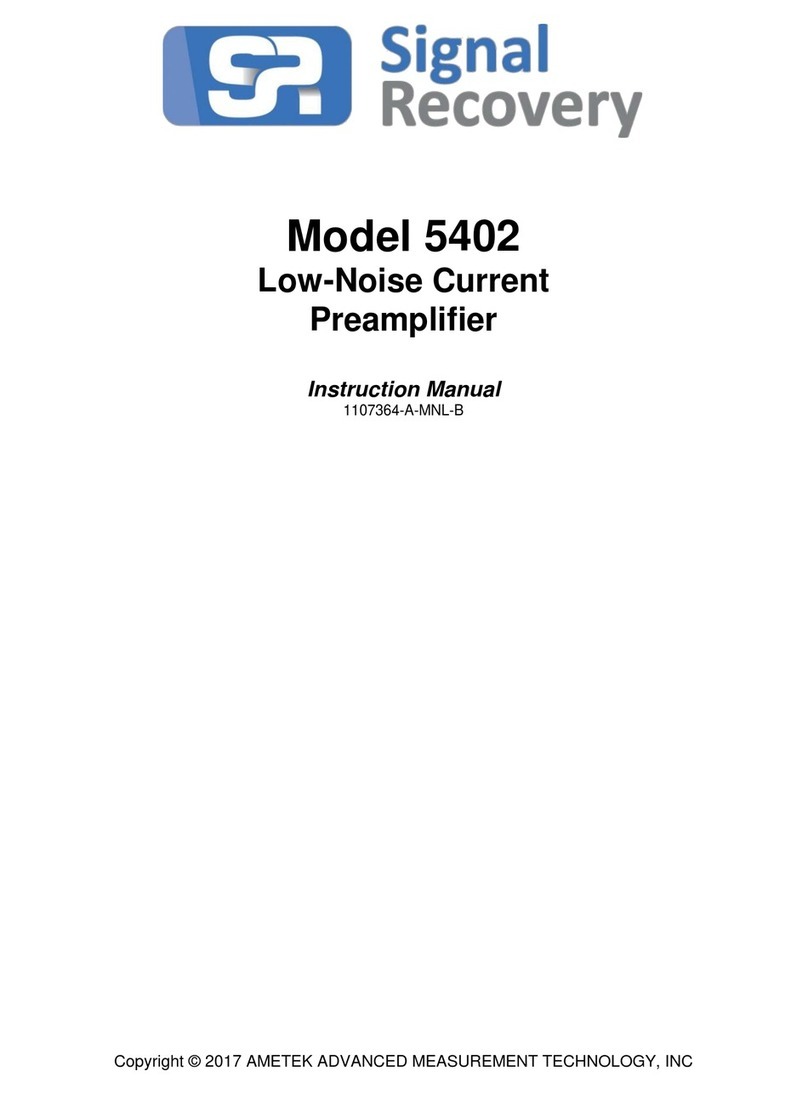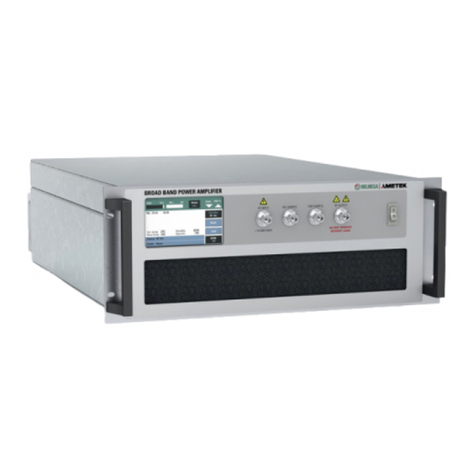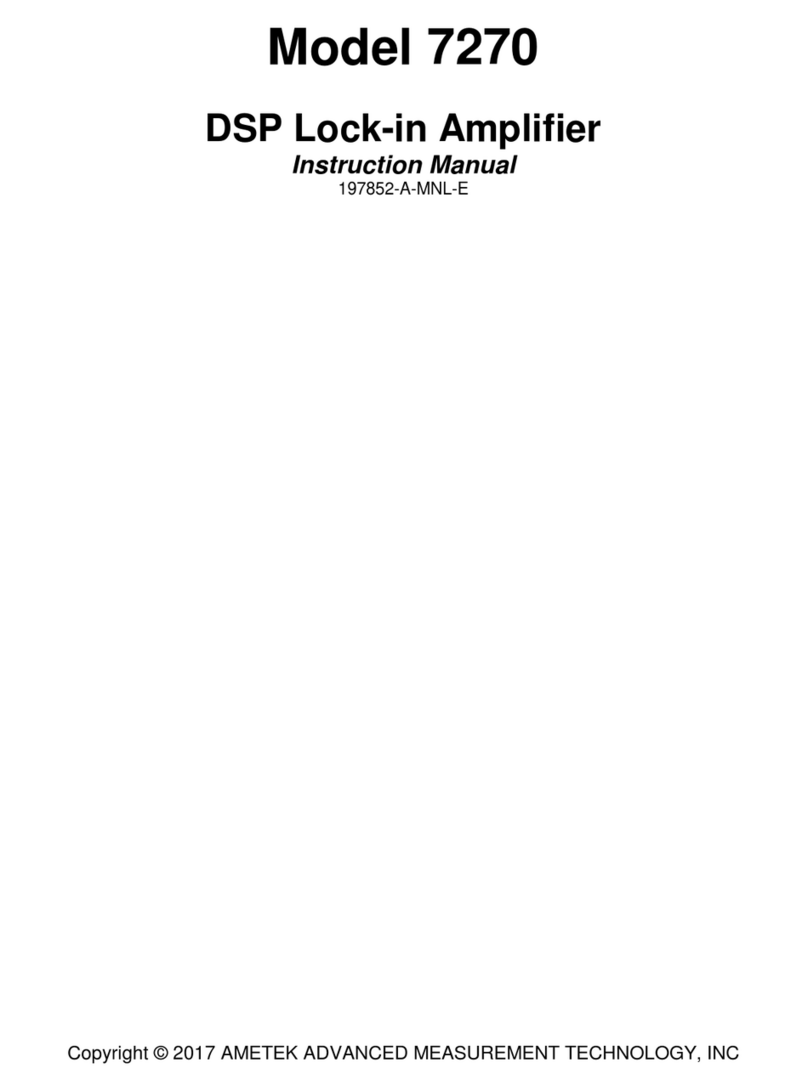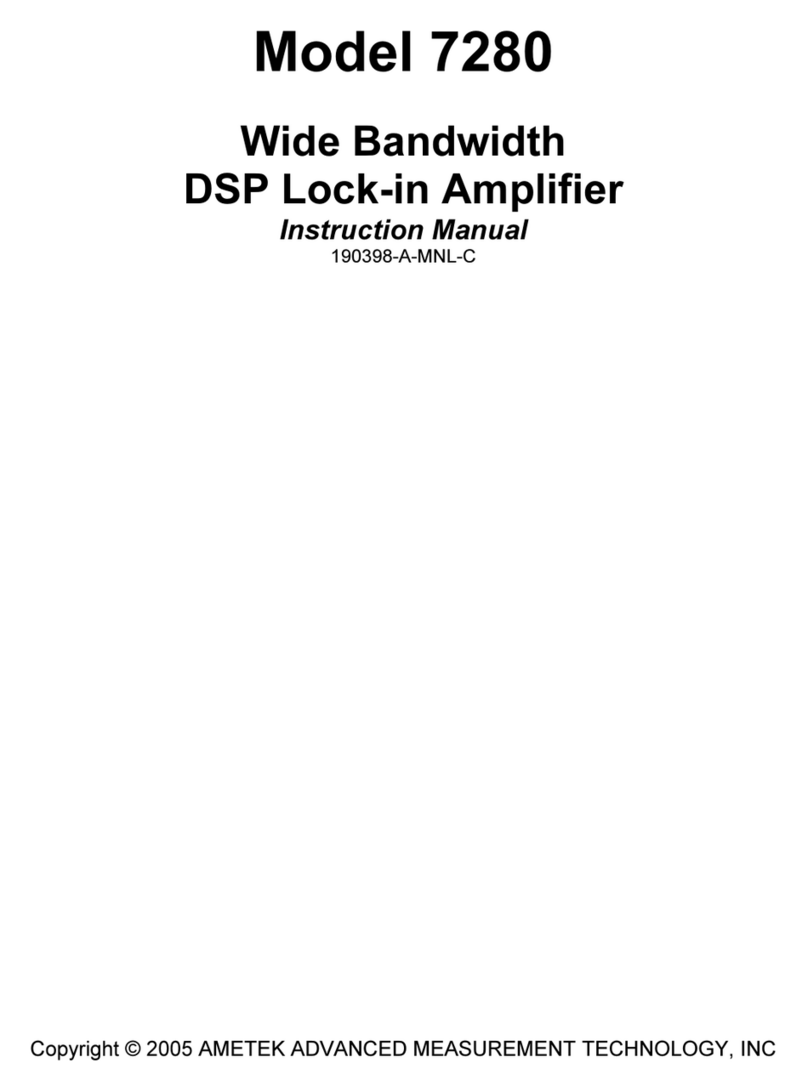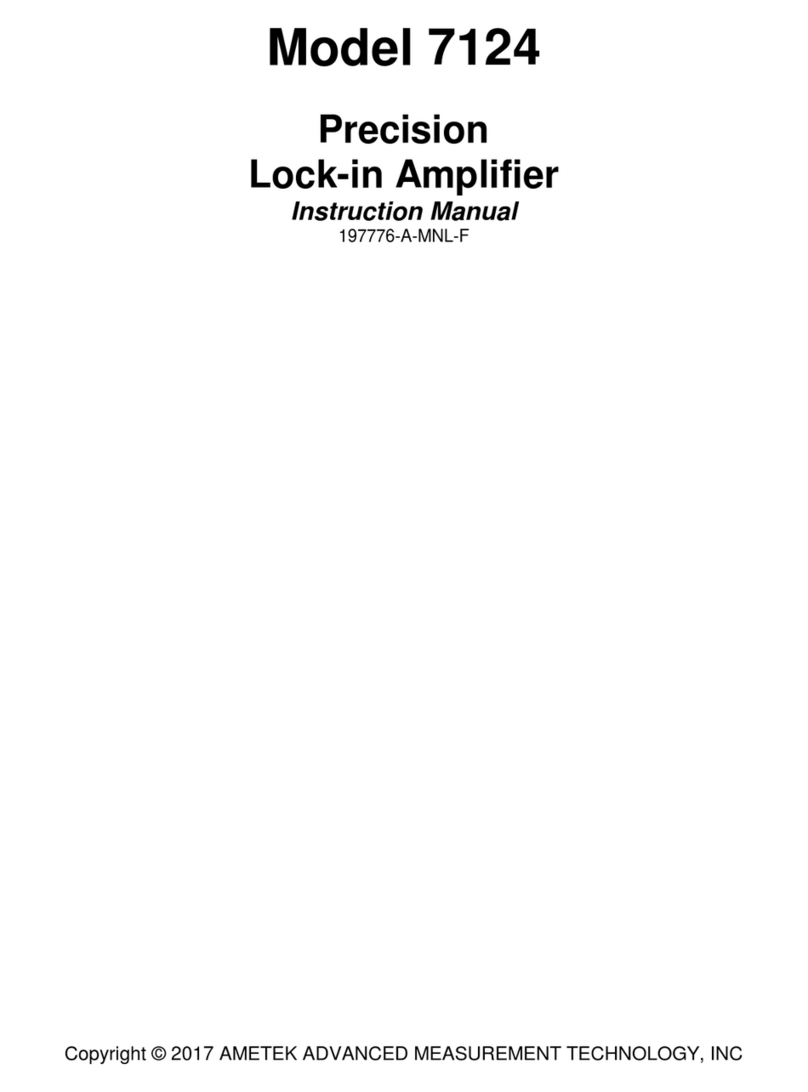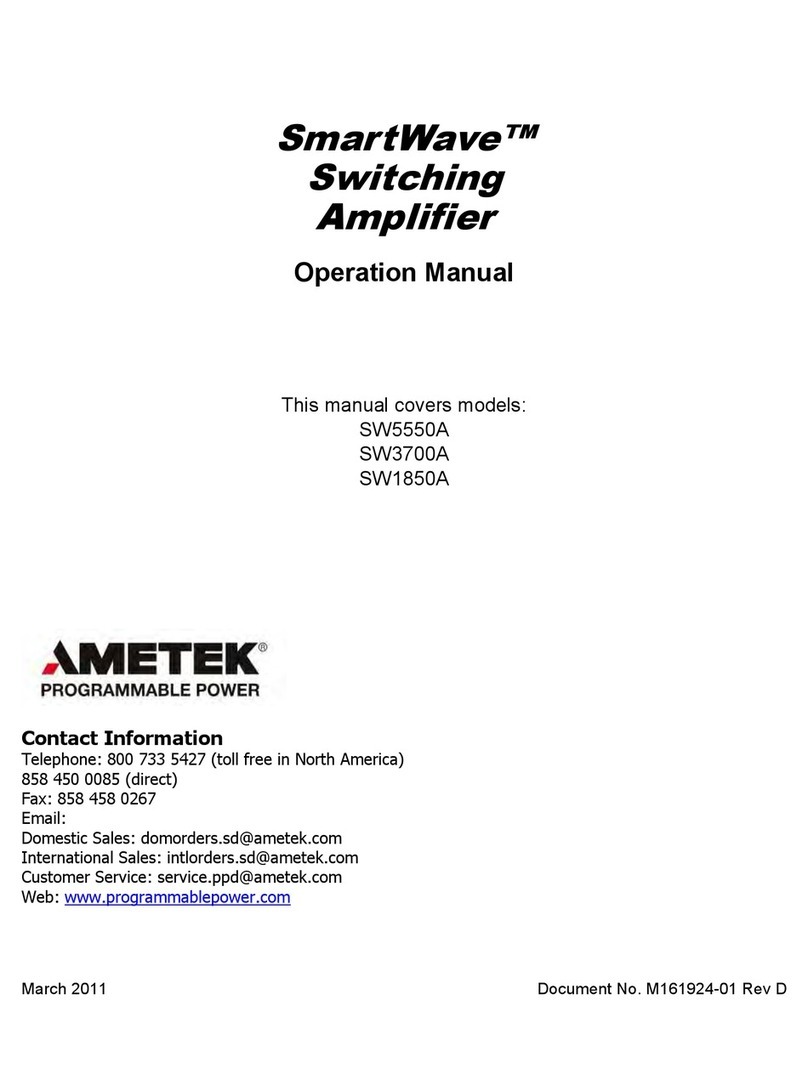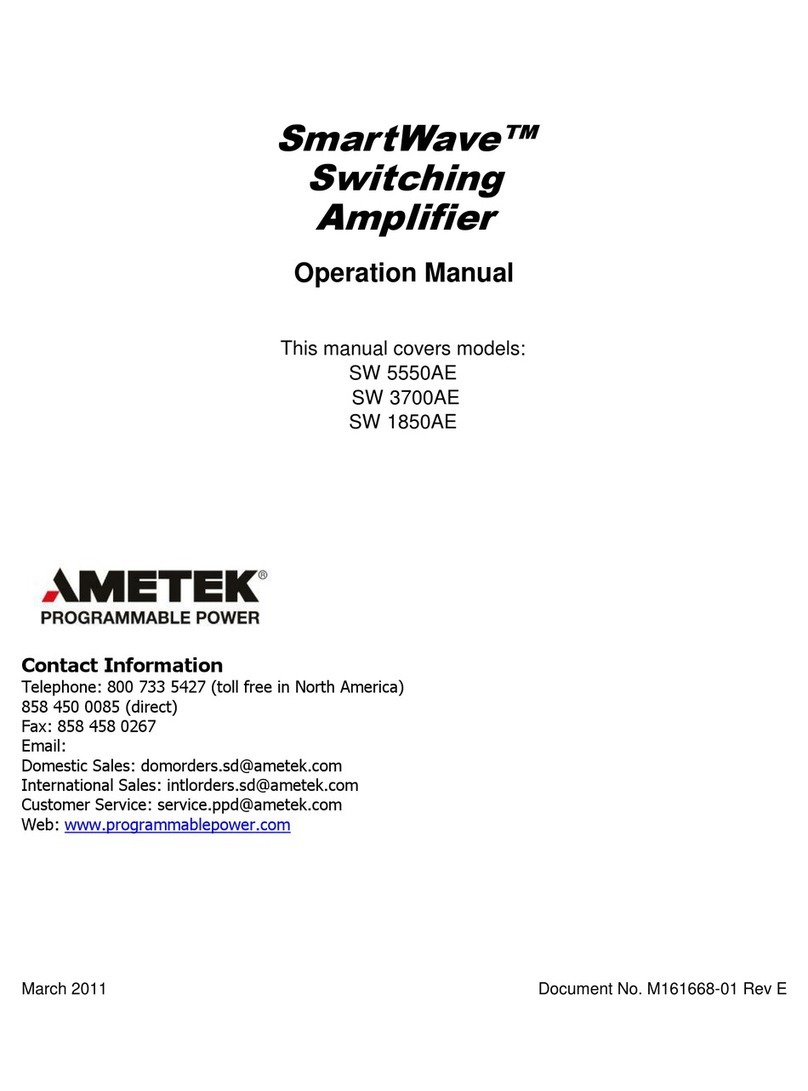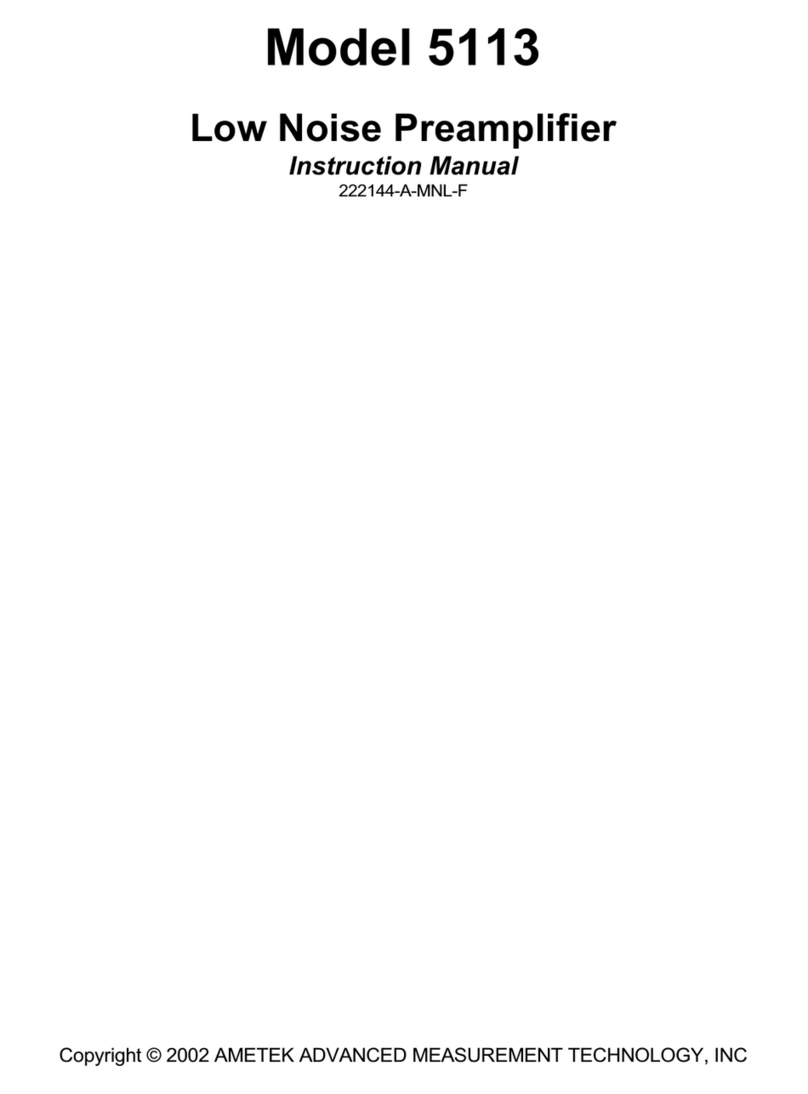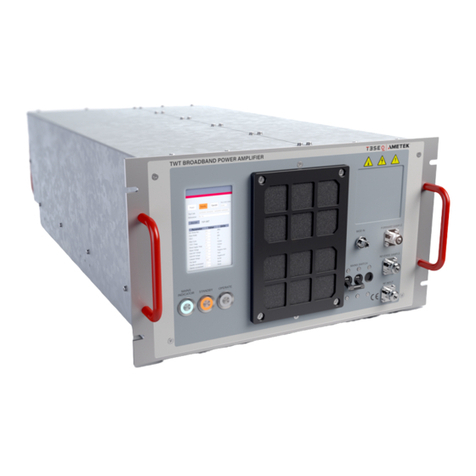AMETEK CTS VDS 200Q Series
Manual for Operation V 1.3.1 3 / 36
Contents
1. Model Overview.............................................................................................................................................4
1.1. VDS 200Q Models........................................................................................................................................4
2. Operating Functions .....................................................................................................................................5
2.1. Front view .....................................................................................................................................................5
2.2. Rear view VDS 200Q200.2...........................................................................................................................8
2.3. Safety with voltage setting............................................................................................................................9
3. Operation......................................................................................................................................................11
3.1. Description of the menus............................................................................................................................11
3.2. Main Menu ..................................................................................................................................................11
3.2.1. ISO 7637.....................................................................................................................................................13
3.2.1.1. Pulse 4 voltage drop..................................................................................................................................13
3.2.1.2. Pulse 2b......................................................................................................................................................13
3.2.2. ISO 16750-2 WD 03/2000-2.......................................................................................................................14
3.2.2.1. Short voltage drop.......................................................................................................................................14
3.2.2.2. Slow decrease / increase............................................................................................................................14
3.2.2.3. Supply voltage profile..................................................................................................................................15
3.2.2.4. Pulse ’Starting profile’ .................................................................................................................................15
3.2.2.5. Sinus Sweep...............................................................................................................................................16
3.2.2.6. Overvoltage Vmax ......................................................................................................................................16
3.2.3. Functions ....................................................................................................................................................17
3.2.3.1. Sine wave ...................................................................................................................................................17
3.2.3.2. Jump Start...................................................................................................................................................18
3.2.3.3. VDS Externally via the analog input ...........................................................................................................18
3.2.3.4. Pulse 4 ( GM 9105 P) .................................................................................................................................19
3.3. Service........................................................................................................................................................20
3.4. Setup...........................................................................................................................................................21
3.5. Source Settings...........................................................................................................................................22
4. Test Equipment............................................................................................................................................24
4.1. Construction................................................................................................................................................24
5. Technical Data .............................................................................................................................................28
5.1. Test level.....................................................................................................................................................28
5.1.1. Sense.............................................................................................................................................................28
5.2. Trigger.........................................................................................................................................................28
5.3. Input/output.................................................................................................................................................28
5.4. Interfaces ....................................................................................................................................................28
5.5. General .......................................................................................................................................................29
5.6. Environmental conditions............................................................................................................................29
6. Maintenance.................................................................................................................................................30
6.1. General .......................................................................................................................................................30
6.2. Test set-up..................................................................................................................................................30
6.3. Test set-up with software iso.control ..........................................................................................................30
6.4. Example Test setup with AutoWave and VDS 200Q..................................................................................31
6.5. Calibration and Verification.........................................................................................................................32
6.5.1. Factory calibration.......................................................................................................................................32
6.5.2. Guideline to determine the calibration period of AMETEK CTS instrumentation .......................................32
6.5.3. Calibration of Accessories made by passive components only:.................................................................32
6.5.4. Periodic In-house verification......................................................................................................................32
7. Delivery Groups...........................................................................................................................................33
7.1. Basic equipment VDS 200Q200.2..............................................................................................................33
7.2. Accessories and options.............................................................................................................................33
8. Appendix ......................................................................................................................................................34
8.1. Declaration of CE-Conformity.....................................................................................................................34
8.1.1. Declaration of CE-Conformity VDS 200Q200.2..........................................................................................34
8.1.2. Connectors VDS 200Q200.2......................................................................................................................35
8.2. VDS 200Q Menu overview .........................................................................................................................36

